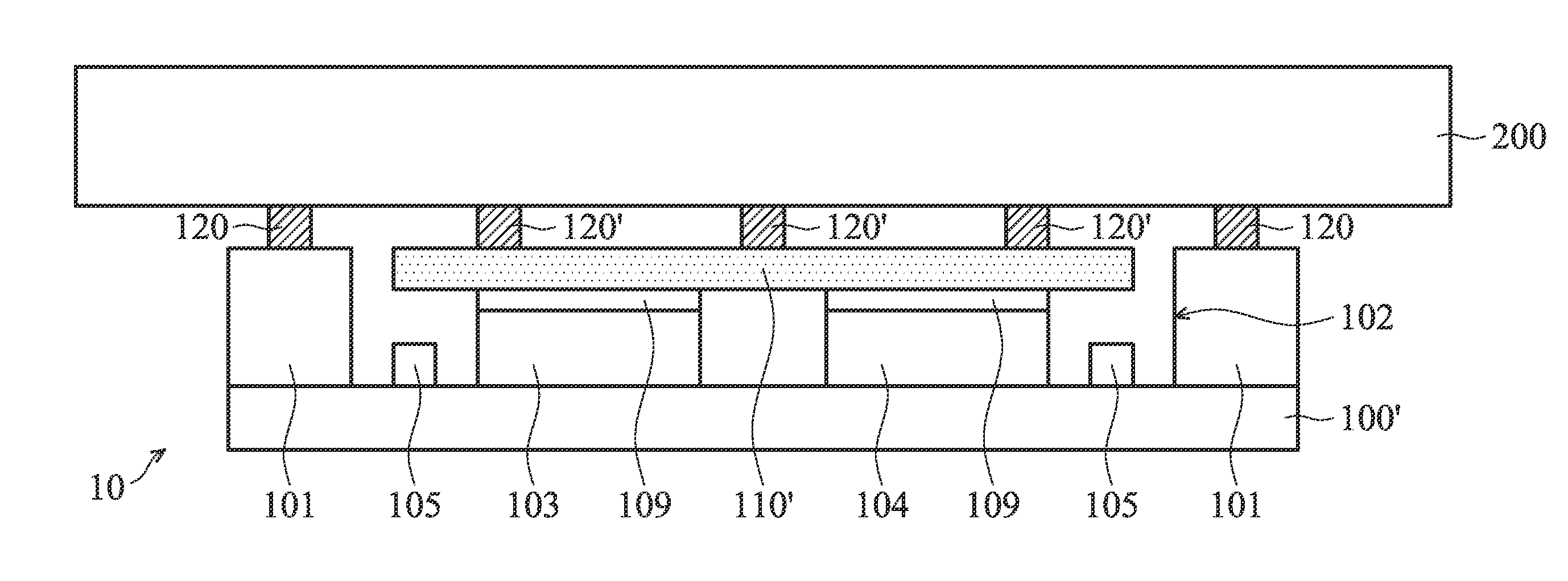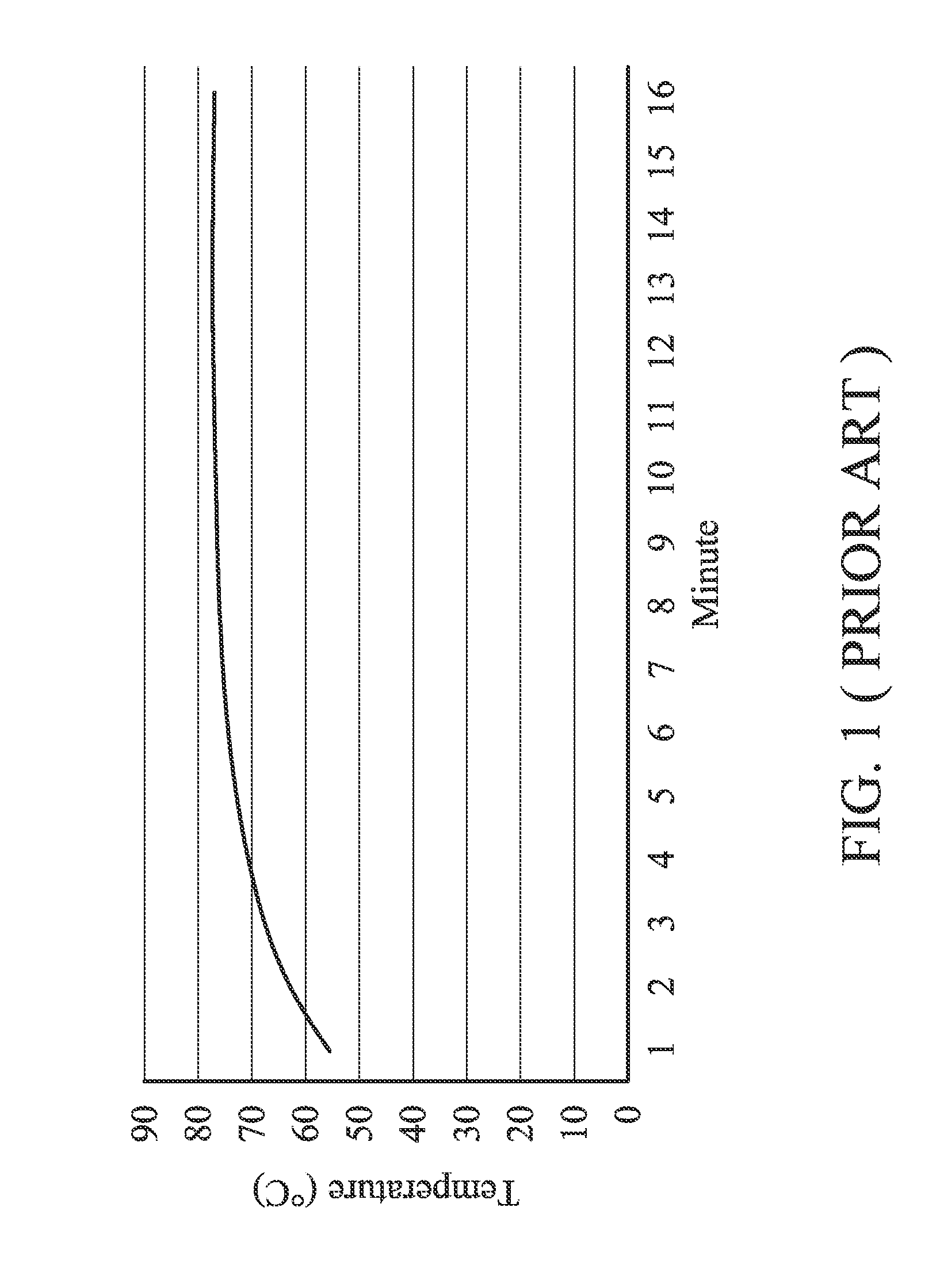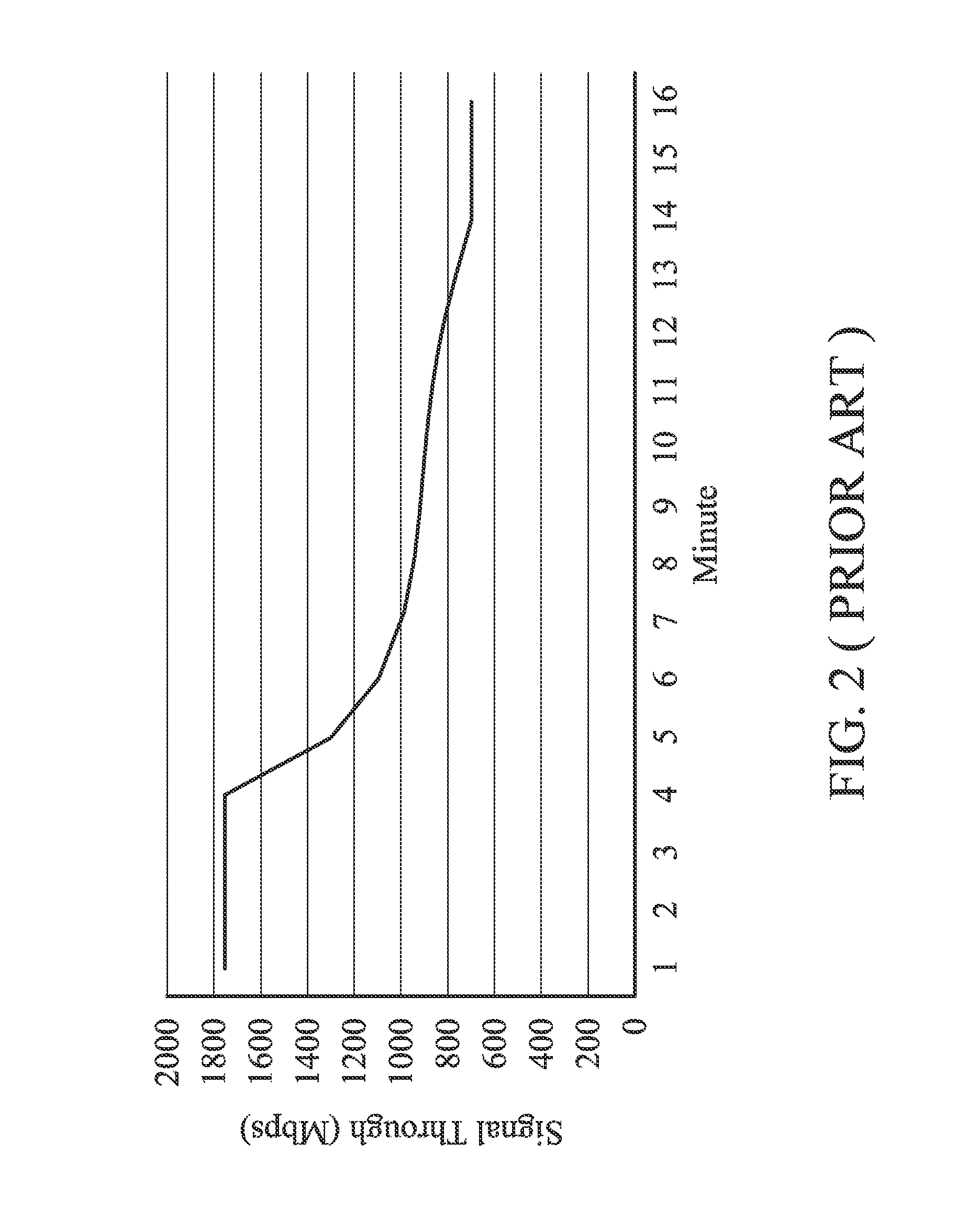System-in-package module and method for forming the same
- Summary
- Abstract
- Description
- Claims
- Application Information
AI Technical Summary
Benefits of technology
Problems solved by technology
Method used
Image
Examples
Embodiment Construction
[0015]The following description is of the best-contemplated mode of implementing the invention. This description is made for the purpose of illustrating the general principles of the invention and should not be taken in a limiting sense. The scope of the invention is best determined by reference to the appended claims.
[0016]FIG. 3F is a cross-sectional view of a SiP module according to an embodiment of the disclosure. Refer to FIG. 3. In the embodiment, the SiP module includes a substrate 100′. A dam 101 and chips 103 and 104 are disposed on the substrate 100′. The dam 101 defines a cavity 102 and the chips 103 and 104 are disposed in the cavity 102.
[0017]In the embodiment, the substrate 100′ and the dam 101 may have an interconnect structure (not shown) therein, which may include components such as metal lines, metal vias and pads. The chips 103 and 104 may form an electrical contact by the interconnect structure.
[0018]Passive elements 105 may be optionally disposed on the substrat...
PUM
 Login to View More
Login to View More Abstract
Description
Claims
Application Information
 Login to View More
Login to View More - R&D
- Intellectual Property
- Life Sciences
- Materials
- Tech Scout
- Unparalleled Data Quality
- Higher Quality Content
- 60% Fewer Hallucinations
Browse by: Latest US Patents, China's latest patents, Technical Efficacy Thesaurus, Application Domain, Technology Topic, Popular Technical Reports.
© 2025 PatSnap. All rights reserved.Legal|Privacy policy|Modern Slavery Act Transparency Statement|Sitemap|About US| Contact US: help@patsnap.com



